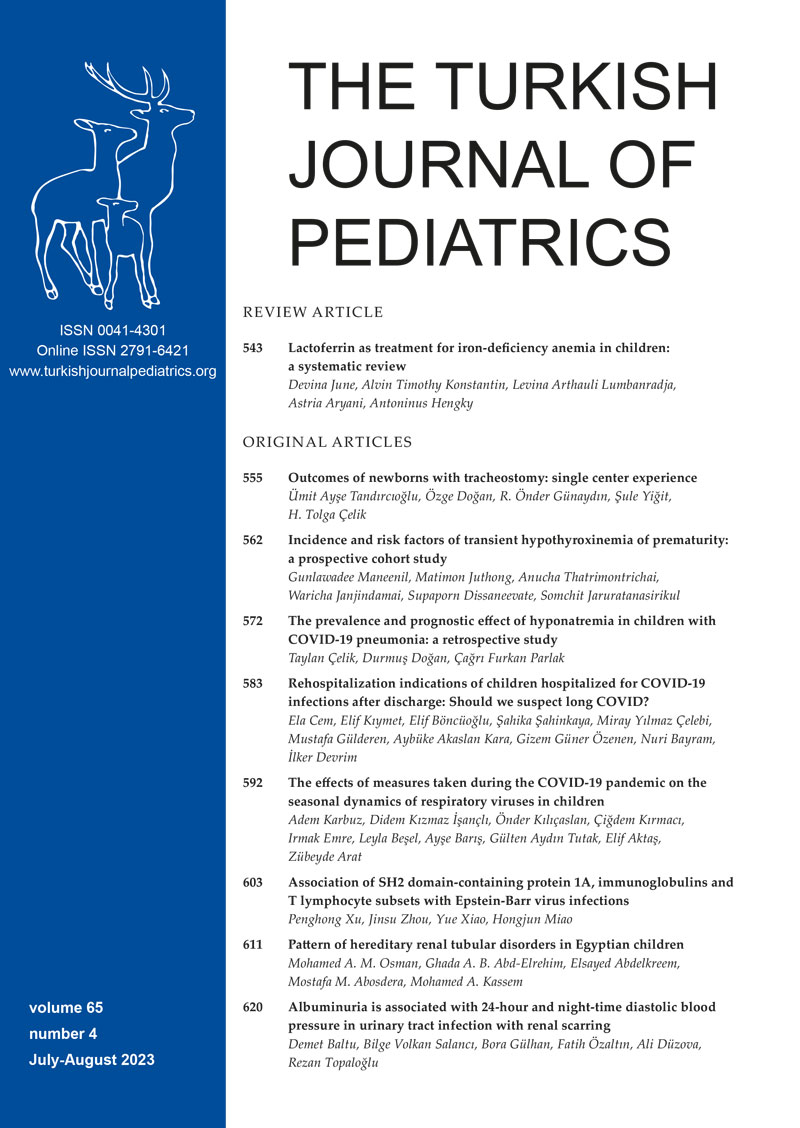Abstract
Background. We aimed to evaluate the effects of public health measures taken during the COVID-19 pandemic on respiratory viruses.
Methods. The study was conducted between February 1, 2021 and December 1, 2022. Patients aged 1 month to 18 years hospitalized for infectious diseases were tested for SARS-CoV-2 and respiratory viruses by multiplex PCR.
Results. Of the total 1173 patients, 56.2% were male and 43.8% were female, and 47.5% of the patients were under 24 months of age. The viruses detected were SARS-CoV-2 31.9%, human rhinovirus/enterovirus 19.4%, respiratory syncytial virus (RSV) 9.3%, parainfluenza virus 7%, adenovirus 6%, seasonal coronavirus 5.2%, bocavirus 3.8%, influenza 3.1%, and metapneumovirus 2.8%. Among the patients, 386 were hospitalized with lower respiratory tract infections, 238 with upper respiratory tract infections, 202 to evaluate fever etiology, 111 with acute gastroenteritis and 236 with other diagnoses. Of these patients, 113 were admitted to the intensive care unit. Intensive care unit admission rates were statistically significantly higher for bocavirus and RSV, in those hospitalized between July 1, 2021 and July 1, 2022 (first period when schools were held full-time face-toface at all grades) and in children aged 1-24 months.
Conclusions. Public health measures taken during the COVID-19 pandemic have affected the seasonal distribution of respiratory viruses and the severity of illness in children.
Keywords: SARS-CoV-2, children, non-pharmacological interventions, pandemic, respiratory viruses
Copyright and license
Copyright © 2023 The Author(s). This is an open access article distributed under the Creative Commons Attribution License (CC BY), which permits unrestricted use, distribution, and reproduction in any medium or format, provided the original work is properly cited.














